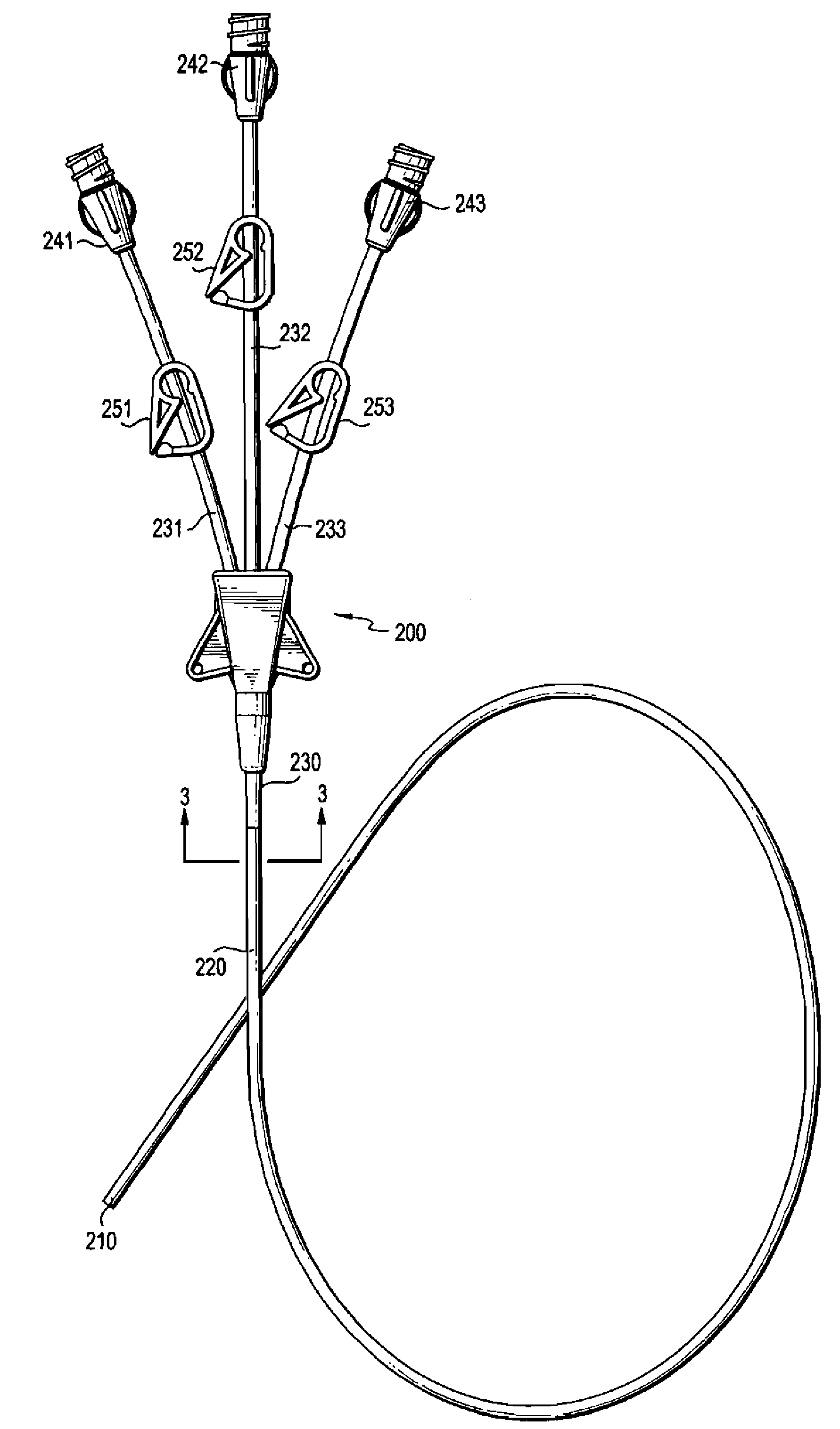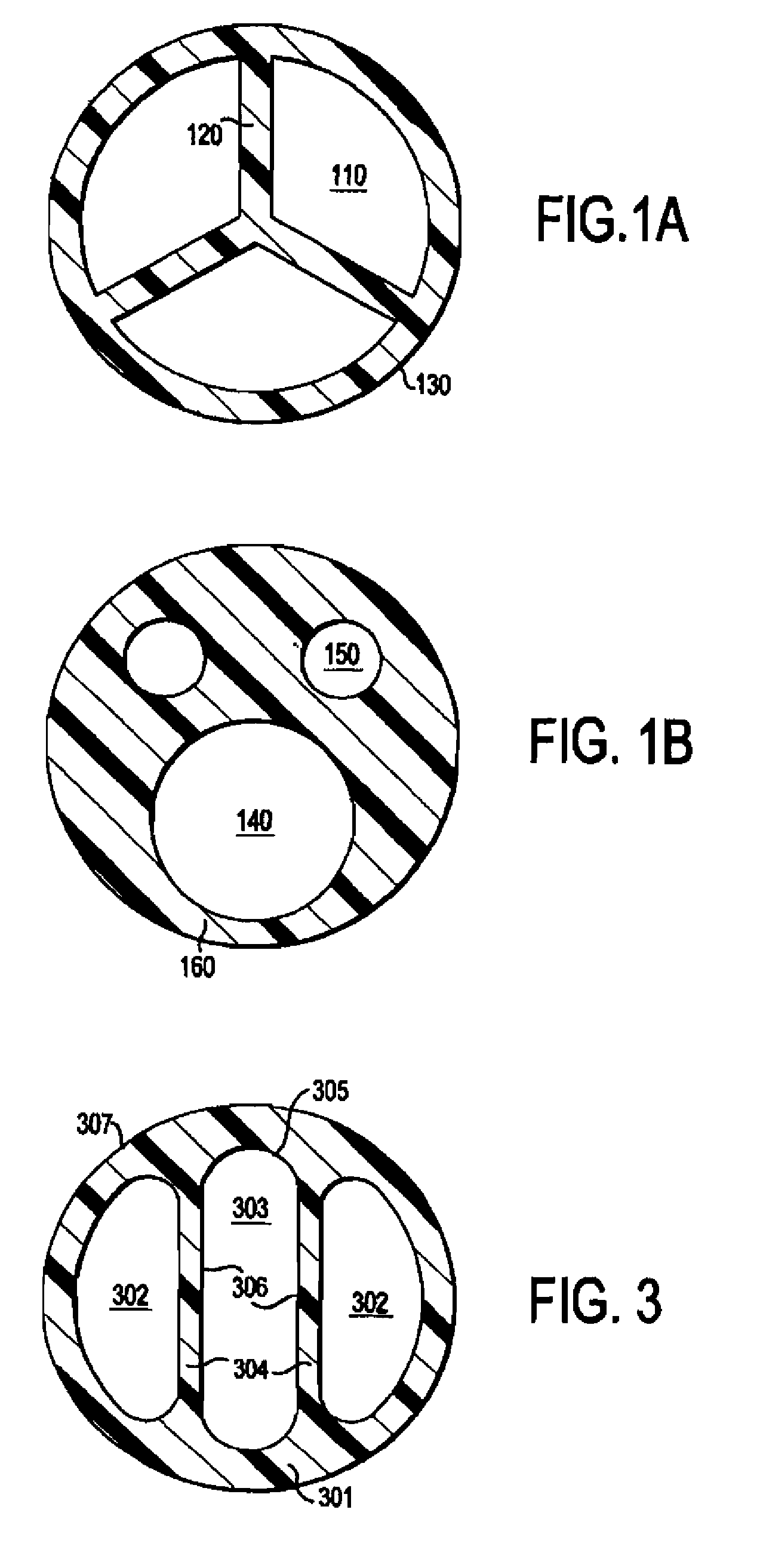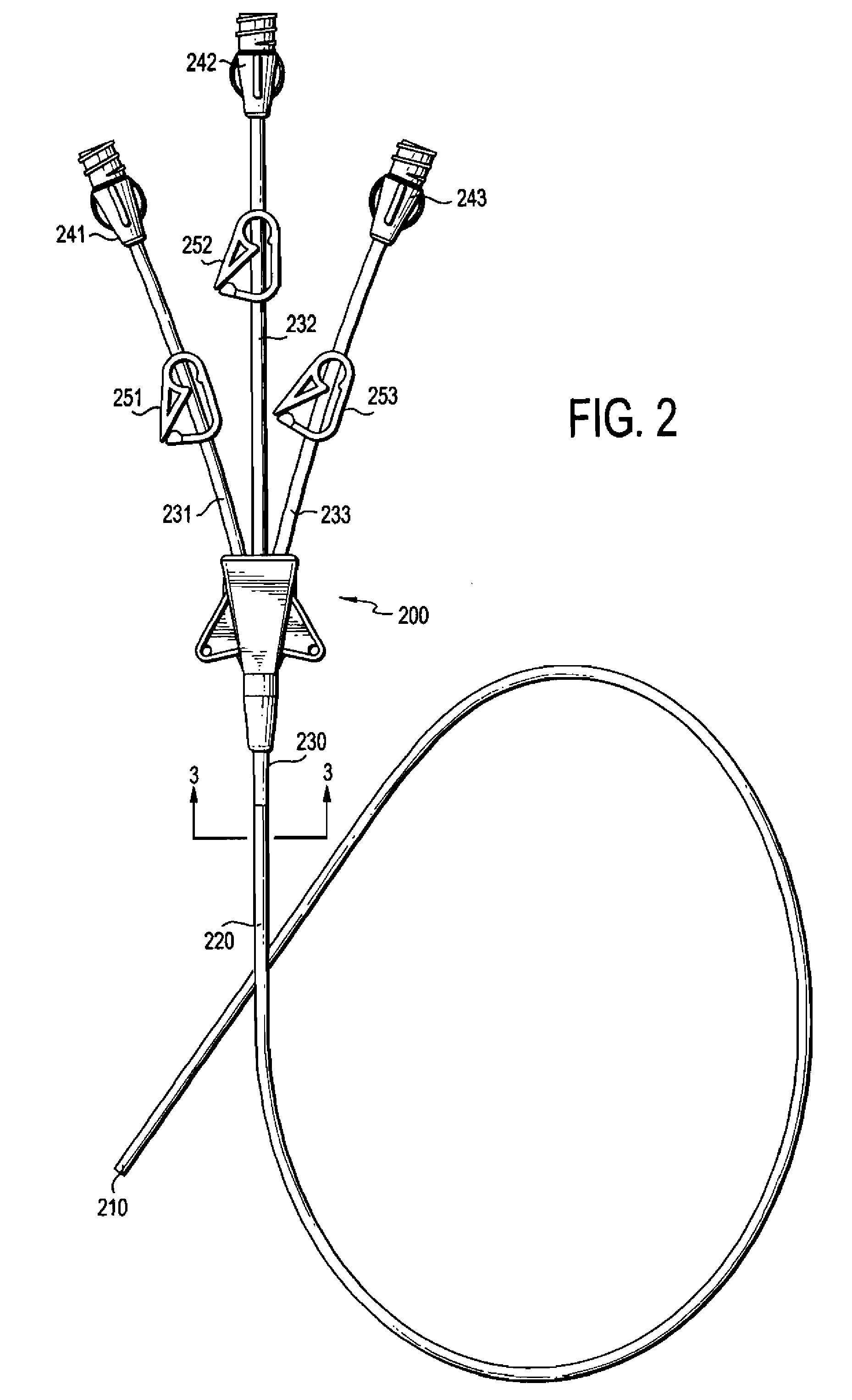Triple Lumen Catheter
a multi-lumen, catheter technology, applied in the field of catheters, can solve the problems of difficult placement of picc, cumbersome medical staff, traumatic for patients,
- Summary
- Abstract
- Description
- Claims
- Application Information
AI Technical Summary
Benefits of technology
Problems solved by technology
Method used
Image
Examples
second embodiment
[0034]FIG. 4 shows a cross section view of the present invention. In this particular embodiment, the two side lumens 402 are of a generally circular shape. And the central lumen 403 is of a “dog bone” shape. The top and bottom interior surfaces 405 of the central lumen of the embodiment shown in FIG. 4 connect smoothly to the side surfaces 406. The entire interior surface 405406 of the central lumen 403 is free of sharp corners. The septa 404 between the two side lumens 402 and the central lumen 403 protrude into the central lumen 403 at normal atmospheric pressure, i.e., the septa 404 are of generally concave shape. When under pressure, such as during power injection procedure, the septa 404 are capable of deforming and may be pushed outward. The side lumens 402, as a consequence, may have reduced size under pressure. Thus, the septa 404 may adopt convex shape under pressure. The potential to deform and expand the diameter of the central lumen 403 provides the present invention exc...
third embodiment
[0035]FIG. 5 shows a cross section view of catheter body of the present invention. In this particular embodiment, the central lumen 503 is of a “hour glass” shape. The two side lumens 502 are of irregular elliptical shape having the interior surface 508 following the general shape of the side surfaces 506 of the central lumen 506. Similar to the embodiment shown in FIG. 4, the septa 504 between the two side lumens 502 and the central lumen 503 protrude into the central lumen 503 under normal atmospheric pressure, i.e., the septa 504 are of generally concave shape. When under pressure, such as during power injection procedure, the septa 504 are capable of deforming and may be pushed outward. Thus, the septa 504 would adopt convex shape under pressure. Similarly, the outer wall 501 of the catheter can be made thicker at the top and bottom of the central lumen than the septa 504. This configuration would help to provide stronger mechanical strength to the exterior wall of the catheter ...
fourth embodiment
[0036]FIG. 6 shows a cross section view of the catheter body of the present invention. In this particular embodiment, instead of one side lumen on one side of the central lumen 603, two smaller side lumens 608609 are formed. This lumen configuration can be adapted to all embodiments of the present invention, which include, but are not limited to, the embodiments disclosed in FIGS. 3, 4, and 5.
[0037]For the lumen configurations shown in FIGS. 4, 5, and 6, a guide wire is preferably traversed through one of the respective side lumens 402502602 when used to advance the catheter. The radius of curvature within the side lumen 402502602 is in all locations (i.e., at all points along the inner wall of the side lumen 402502602) equal to or greater than the radius of curvature of the outer wall (or outer perimeter surface) of an associated guide wire.
[0038]The central lumen of the present invention 303403503603, has a large cross section (or cross-sectional area) relative to the available sp...
PUM
 Login to View More
Login to View More Abstract
Description
Claims
Application Information
 Login to View More
Login to View More - R&D
- Intellectual Property
- Life Sciences
- Materials
- Tech Scout
- Unparalleled Data Quality
- Higher Quality Content
- 60% Fewer Hallucinations
Browse by: Latest US Patents, China's latest patents, Technical Efficacy Thesaurus, Application Domain, Technology Topic, Popular Technical Reports.
© 2025 PatSnap. All rights reserved.Legal|Privacy policy|Modern Slavery Act Transparency Statement|Sitemap|About US| Contact US: help@patsnap.com



